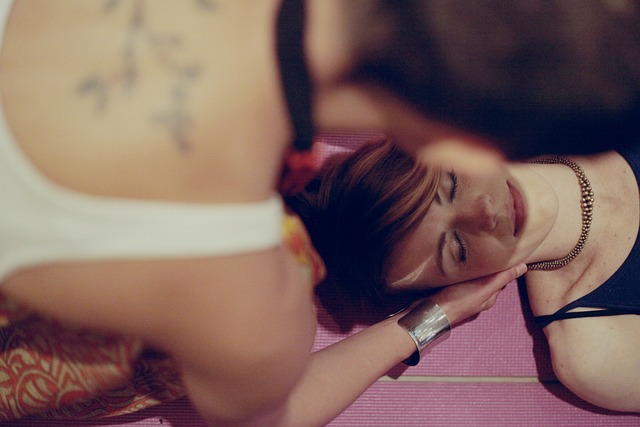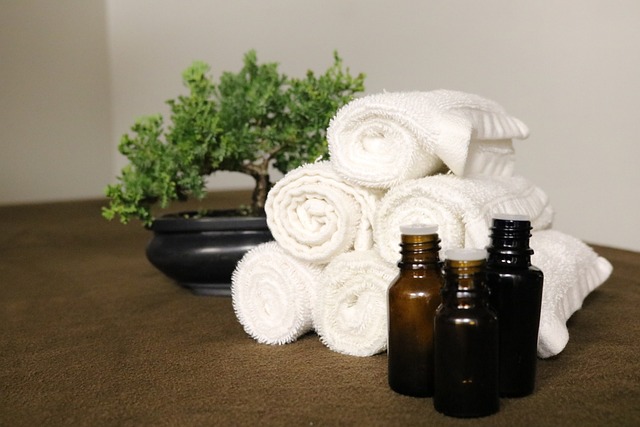Yoga for wellness is a powerful combination of physical postures, breathing techniques, and mindfulness that effectively mitigates anxiety and builds resilience. Regular practice strengthens the body, improves flexibility and balance, and promotes overall well-being. The non-judgmental environment of yoga studios fosters self-acceptance and community support for mental health. Breathing exercises, especially diaphragmatic breathing, activate the 'rest and digest' response of the nervous system, calming the mind and reducing anxiety symptoms. Integrating yoga into daily routines enhances physical flexibility, mental clarity, and inner peace, fostering present-moment awareness and detaching individuals from anxious thoughts.
Discover the powerful therapeutic practices that can transform your well-being. This article explores effective strategies to reduce anxiety and build resilience, focusing on the beneficial impact of yoga for wellness. Uncover how mindful movement, specific breathing techniques, and seamlessly integrating yoga into daily routines can foster calm and clarity, promoting long-term mental health. Learn practical steps to enhance your overall wellness through these time-tested practices.
- The Link Between Yoga and Anxiety Reduction
- Building Resilience Through Mindful Movement
- Breathing Techniques for Calm and Clarity
- Integrating Yoga into Your Daily Routine for Long-Term Wellness
The Link Between Yoga and Anxiety Reduction

Yoga has emerged as a powerful tool in the quest for wellness, particularly in mitigating anxiety and fostering resilience. The ancient practice intertwines physical postures (asanas), breathing techniques (pranayama), and mindfulness—a triple threat that effectively calms the nervous system and quiets the mind. By focusing on the present moment and cultivating awareness of one’s breath, yoga helps individuals detach from anxious thoughts and feelings, thereby reducing stress levels and promoting a sense of inner peace.
The benefits of yoga for wellness extend beyond immediate relaxation. Regular practice can strengthen the body, improve flexibility, and enhance balance, contributing to a overall feeling of well-being. Moreover, the non-judgmental environment often found in yoga studios encourages self-acceptance and fosters a community that supports individuals on their journey towards mental and emotional health.
Building Resilience Through Mindful Movement

Building resilience is a crucial aspect of managing and reducing anxiety, and one effective approach lies in mindful movement practices such as yoga. Yoga for wellness has gained immense popularity due to its ability to enhance both physical and mental health. Through a series of precise postures, breathing techniques, and mindfulness, yoga cultivates a deep connection between the mind and body, fostering a sense of calm and control.
Regular practice can help individuals develop greater self-awareness, enabling them to recognize and manage their anxiety responses more effectively. Mindful movement encourages the release of tension from the body, promoting relaxation and reducing the physical symptoms often associated with anxiety. It also teaches individuals to be present in the moment, focusing on breath and sensation, which can disrupt anxious thoughts and provide a sense of grounding.
Breathing Techniques for Calm and Clarity

Breathing techniques are a powerful tool in the arsenal of yoga for wellness, offering a simple yet effective way to calm the mind and enhance resilience against anxiety. When faced with stressful situations, our breath often becomes shallow and rapid, triggering a physiological response that increases heart rate and muscle tension. Conscious breathing exercises reverse this reaction by promoting relaxation and enabling a clearer perspective.
One such technique is diaphragmatic breathing, also known as belly breathing. By focusing on slow, deep breaths that engage the diaphragm, individuals can activate the parasympathetic nervous system, responsible for the ‘rest and digest’ response. This not only reduces anxiety symptoms but also boosts overall well-being, fostering a sense of calm and clarity that carries over into daily life. Yoga practitioners often incorporate these breathing exercises into their practice, creating a holistic approach to wellness that addresses both the mind and body.
Integrating Yoga into Your Daily Routine for Long-Term Wellness

Integrating yoga into your daily routine can be a powerful tool for long-term wellness and anxiety reduction. Beyond providing physical benefits like improved flexibility and strength, yoga has deep psychological effects. The mindful focus on breath and movement helps calm the nervous system, reducing stress hormones and promoting relaxation. Regular practice also fosters mental clarity, enhances self-awareness, and cultivates a sense of inner peace that can be incredibly grounding in high-anxiety moments.
Yoga’s holistic nature, which connects mind, body, and spirit, makes it an excellent resilience booster. The meditative aspects encourage present-moment awareness, helping individuals detach from anxious thoughts and develop a healthier relationship with stress. Additionally, the sense of accomplishment gained from mastering poses can boost self-confidence and foster a positive mindset—all crucial components for navigating life’s challenges with greater ease and resilience.
Anxiety can be a formidable obstacle, but integrating therapeutic practices like yoga into your daily routine offers a holistic approach to both reduction and resilience. By combining mindful movement, breathing techniques, and consistent practice, individuals can harness the power of yoga for wellness, fostering mental clarity and emotional stability. Embracing these practices not only alleviates immediate anxiety but also builds long-term coping mechanisms, ensuring a more balanced and resilient mindset. Yoga for wellness is not just a trend; it’s a proven method to navigate life’s challenges with grace and equanimity.
